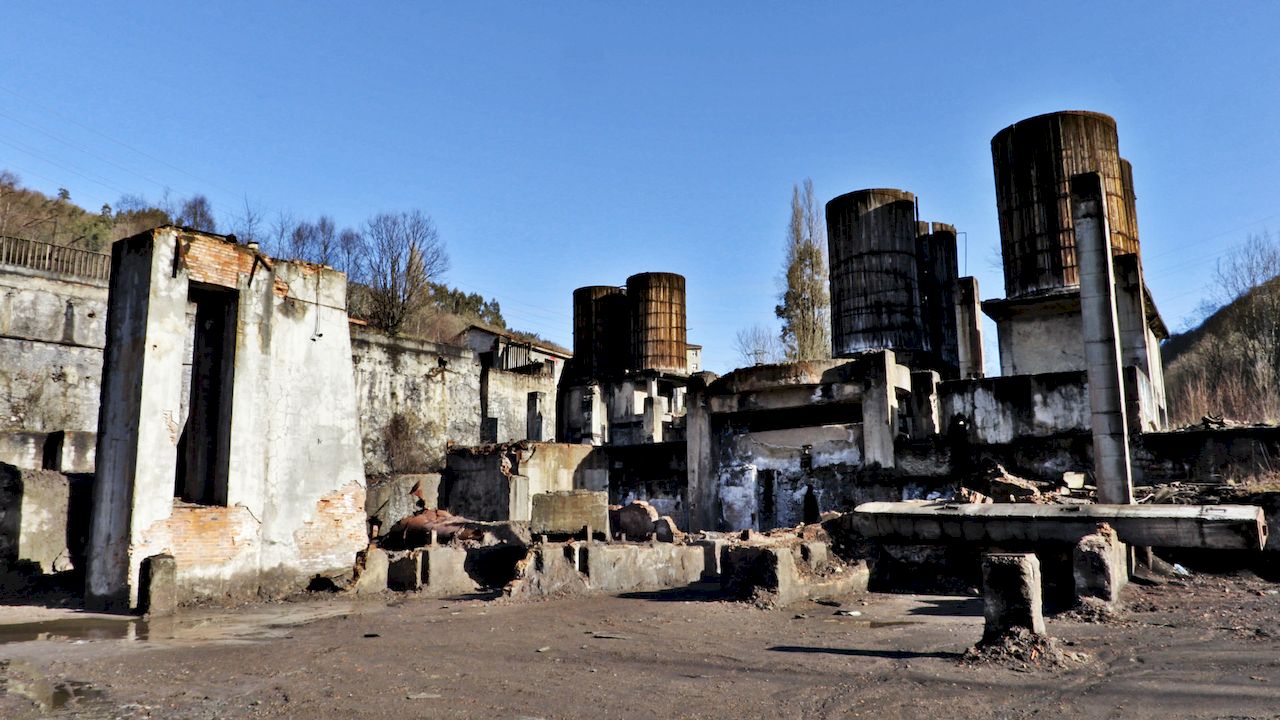This deposit represented the most important mercury mining development in Asturias, whose benefits lasted for about 130 years. Even today, the old and greatly deteriorated headframe is still visible.
The mining field of El Terronal-La Peña, located around one kilometer to the north of Mieres, has been the most remarkable Asturian mercurial environment. This is the region where this liquid metal was exploited the most.
The first mercury record in Asturias was presented on September 26, 1838 by Manuel García Argüelles, the Cathedral's canon. It was located in La Peña area. However, when the clergyman died, a long dispute arose between his heirs, so that the delimitation of the "La Peña" property concession could not be carried out until June 12, 1843.
Back then, two companies were working on this field: La Unión Asturiana, which made use of this deposit in Mieres producing between 4,000 and 4,500 quintals of cinnabar per month (about 960 jars per year), and El Porvenir de Asturias, which owned mining developments encompassing El Terronal and La Peña territories and producing about half the amount of cinnabar than La Unión Asturiana.
By 1872, El Porvenir began to sink La Peña shaft and in 1908 The Oviedo Mercury Mines took over. Then, it was replaced by the Astur Belga company in 1947, which resumed operations. The old headframe and the extraction machinery of this shaft were replaced in 1953.
The mineral is distributed in six conglomerate and breccioid parts (called Esperanza, Aumento a Peña, Brecha Nueva, Peña 1, Peña 2 and Stol), disposed in a lenticular morphology following a complex anticlinal structure, within the stratigraphical series of the productive Carboniferous.
The cinnabar is unevenly spread (both dispersed and in small veins) fitting in the above-mentioned levels of conglomerate and breccioid. A greater concentration of ore is found with an increase in organic matter and carbonates in the detrital matrix. In addition to the main sulphur, there are others which appear occasionally (metacinnabar, pyrite, sphalerite, galena, stibnite, marcasite) and, exceptionally, native gold.

El Terronal headframe

El Terronal facilities

Peña Mine remains



Comentarios recientes